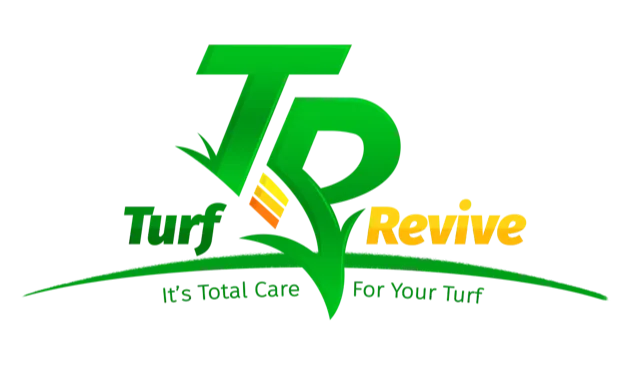
September in the Inland Empire: What “Normal” Weather Means for Artificial Turf—and Why Cleaning Matters Now

September in Southern California’s Inland Empire—covering communities across Riverside and San Bernardino counties—arrives with a distinctive rhythm. Days are still hot and sunny, nights become comfortably warm, and rain is scarce. For homeowners and property managers with artificial turf, these conditions are a double‑edged sword: the long, bright days keep landscapes inviting, but the combination of heat, ultraviolet (UV) radiation, dust, and occasional overnight moisture is hard on synthetic fibers and infill. Understanding what “typical” September weather looks like here and how it interacts with turf systems will help you prevent odors, matting, and premature wear.
By the numbers, September remains very warm in the valleys. In Riverside, average daily highs ease from about 93°F at the start of the month to roughly 87°F by the end, with nights commonly in the low-to-mid 60s. Cloud cover is limited, with overcast or mostly cloudy skies about 12% of the time across the month. San Bernardino trends similarly, with average highs sliding from the mid‑90s to the upper‑80s through September and a comparable share of clear skies. In coastal‑influenced cities like San Diego, September highs typically sit in the mid‑70s and the month is still among the sunniest of the year—illustrating how much hotter and drier the Inland Empire stays relative to the coast during early fall (WeatherSpark climatologies for Riverside and San Bernardino; San Diego shown for contrast).
These warm‑to‑hot days and clear skies matter for turf because synthetic surfaces heat far beyond the air temperature. Independent field measurements from Penn State’s Center for Sports Surface Research and others have shown synthetic turf surfaces commonly register 35° to 55°F (≈20° to 30°C) hotter than adjacent natural grass under sun, with peak values on hot days documented near or even above 175–200°F. This heat load accelerates UV‑driven degradation of plastic fibers, increases user discomfort and burn risk for bare skin or paws, and speeds up chemical and microbial reactions that produce odor—especially when organic residues are present on or within the infill.
September is also one of the Inland Empire’s driest months. In many valley locations, monthly precipitation totals are typically a few tenths of an inch at most, sometimes split over just a day or two of light rain. The upside is predictable outdoor plans; the downside is that your turf receives little “natural rinse.” Dust, pollen, leaf fragments, food and drink spills, and pet urine salts simply accumulate. Without intervention, they compact into the fiber canopy and infill, reducing airflow and trapping heat—conditions that make surfaces hotter, flatter, and smellier by afternoon.
Night and early‑morning humidity, plus dew, complicate the picture. Even when days are bone‑dry, nocturnal moisture can condense on turf, soak into dirty infill, and linger where fibers are matted. When that moisture warms after sunrise, microbes thrive. In shaded alcoves, under furniture, or along edges with poor drainage, the cycle of “moisten, warm, and slowly dry” becomes a recipe for mildew, bacterial growth, and persistent odor. If you have pets, those micro‑pockets are where urine residues tend to concentrate—and where standard rinsing often falls short.
Every so often, September delivers an out‑of‑pattern jolt. In late September 2025, for example, the remnants of Tropical Storm Mario wrung out sudden downpours across parts of the Inland Empire, producing flash floods, debris flows, and tragic loss of life from Yucaipa to Barstow. The rainfall totals weren’t extreme by East Coast standards—some sites saw on the order of one to two inches—but they fell rapidly onto parched, fire‑scarred slopes, propelling mud into roads and neighborhoods. For turf owners, events like this aren’t just a cleanup headache; heavy silt and organic debris washed onto turf will clog drainage, mat fibers, and import odor‑causing material unless promptly removed.
Whether the month behaves “normally” or throws a curveball, heat is the dominant stressor for synthetic grass in the Inland Empire. Onsun‑baked afternoons, synthetic blades soften and then re‑harden as temperatures swing, increasing the tendency to mat under foot traffic.Infill can migrate or compact. Seams and edges expand and contract, letting fine debris infiltrate the backing. The visual cues are familiar: flattened patches that no longer spring back,dull or chalky color where UV has attacked the pigment, and areas that stay damp longer than they should the morning after dew—or after that once‑in‑a‑while shower.
Cleaning is the lever that restores performance, and the cornerstone of effective cleaning in a hot, dry climate is targeted removal of organic residues. Hosing helps with dust, but it does little to break down the chemistry of pet urine or spilled food.That’s where enzyme‑based cleaners come in. Enzymes such as proteases, lipases, amylases, and ureases act as biological catalysts that attack specific soils: proteins from food or body oils, fats and greases, starches, and urea that converts to ammonia. Rather than masking smells, these catalysts dismantle the molecules responsible for odor and biofilm formation, leaving fewer nutrients for bacteria to feed on. Importantly for turf owners, properly formulated enzyme products are designed to work at ambient temperatures and are typically biodegradable, aligning with safer‑chemistry programs like the U.S. EPA’s Safer Choice criteria for enzymes and cleaning ingredients.
If you manage a pet‑frequented area, the case for enzymes is even stronger. Cat and dog urine deposits introduce urea and other nitrogenous compounds that, in the presence of urease‑producing microbes, quickly convert into ammoniacal compounds with sharp, persistent odor. Heat accelerates this process;so does trapped moisture overnight. An enzyme treatment that includes urease‑targeting activity paired with thorough rinsing removes the substrate that sustains the smell. Over time,you’ll also notice fewer “remarking” behaviors from pets since the olfactory triggers are reduced rather than perfumed over.
Safety matters when choosing any cleaner. Enzymes aren’t automatically “safe” just because they’re biological; concentrated industrial exposure has been associated with respiratory sensitization among factory workers making cleaners. But in consumer applications used as directed, reputable reviews note no evidence of elevated risk. You can reduce uncertainty by looking for products that carry the EPA’s Safer Choice label or that follow Design for the Environment (DfE) criteria for enzymes and enzyme stabilizers; that tells you each ingredient has been screened for human and environmental health considerations while still meeting performance standards.
Cleaning is only one pillar. Grooming is the other. September’s heat and dryness flatten fibers; regular brushing or power‑grooming lifts the pile, improves air flow through the canopy, and redistributes infill to where it performs best. Industry maintenance guidance—from field builders and trade councils—consistently emphasizes brushing to prevent localized compaction,monitoring infill depth, and decompacting or replenishing infill where it’s migrated, especially in high‑use lanes. Even on residential lawns, the same physics apply :upright fibers shed heat a bit better, dry faster after dew, and look markedly more natural.
Drainage inspection closes the loop. After any moisture event—be it heavy dew under cool morning conditions or an out‑of‑season shower—walk the surface. Watch for slow‑to‑drain corners, faint puddling, or faint earthy smells that persist past midday. Gently probe along seams and edges to see whether fines have infiltrated beneath the backing; remove what you can and consider edging repairs if gaps have opened. The goal is to eliminate spots where water lingers and organics collect. In the Inland Empire, where September storms are infrequent but intense when they do occur, simple checks right after weather passes can prevent long‑term odor and backing damage.
Because September straddles the line between peak summer and autumn ,it’s a strategic time to schedule a deep service—especially if your turf is more than two years old or sees heavy use. A professional deep clean should include an enzyme flush for pet and spill zones, mechanical grooming to stand fibers up, infill redistribution or top‑off if needed, and a close inspection of seams, edges, and drainage paths. Think of it as resetting the system before cooler, potentially wetter months introduce different stressors. The cost of a yearly or twice‑yearly service is usually a fraction of premature replacement, and it preserves the look and feel that justified your turf investment in the first place.
Health and comfort are part of the calculus. On sunny Inland Empire afternoons, synthetic turf surface temperatures can outrun the air by dozens of degrees; independent research has documented synthetic surfaces above 150°F, with some measurements near 200°F during hot spells. That’s too hot for bare feet and pet paws and can cause contact burns. If you expect children, athletes, or pets to use the surface at midday, schedule activities outside peak sun, deploy shade where feasible, and consider brief, light hose‑downs to drop the surface temperature—while remembering that any added moisture should be followed by fiber brushing once dry to avoid matting.
Public‑health guidance around athletic surfaces adds a complementary lesson: avoid skin trauma (“turf burn”) and maintain good hygiene to reduce the risk of skin infections such as MRSA, which have been observed in sports settings that involve skin‑to‑surface friction and close person‑to‑person contact. While those outbreaks are studied mostly on large athletic fields, the housekeeping principle is universal for synthetic surfaces: keep the surface clean, dry promptly after moisture, and avoid conditions that trap grime where skin contacts the turf.
If you maintain turf in Menifee, Temecula, Murrieta, Riverside, Corona, San Bernardino, or neighboring communities, you’ll see the same seasonal arc. Early in the month, heat still dominates; by late September, the worst of the heat eases but UV remains high, and nights are only modestly cooler. On average, skies stay mostly clear—great for backyard time and barbecues, but tough on synthetic fibers. If late‑season tropical moisture makes a cameo, as it did in 2025, you may get a day of intense runoff across dusty patios and planters. Be ready with a post‑storm routine: remove silt and organic debris off the turf first, rinse in stages from clean to dirty zones, enzyme‑treat pet and traffic lanes, and groom once the surface has dried.
Taken together, a September playbook for the Inland Empire looks like this—expressed as habits rather than checkboxes. Keep the surface free of loose organics so heat doesn’t bake them in. Use enzyme cleaners to dismantle the chemistry of odor at the source, especially in pet areas. Rinse tactically to cool and to help lift dust before it compacts, then brush to stand fibers and speed drying. Inspect drainage and edges after any moisture so dampness never lingers overnight. And once or twice a year, invest in a deepservice so your turf heads into the next season refreshed rather than fatigued. It’s not complicated, but in a climate that’s hot, dry, and sunny through much of September, consistency is everything.
The Inland Empire’s “normal” September isn’t hostile so much as relentless. Lots of sun. Not much rain. Heat that rides well into the afternoon. Occasional overnight moisture that, when trapped by debris or matting, fuels odor and microbes. And once in a while, a desert‑fed storm that drops a month’s worth of rain in a few hours. Artificial turf thrives here when it’ s cared for with that reality in mind: clean strategically, groom regularly, keep drainage open, and act quickly after weather shifts. Do that, and your lawn stays cooler, cleaner, and far closer to the lush, green promise that made you choose turf in the first place.
Sources & Further Reading
WeatherSpark– Average September Weather in Riverside, CA (highs ~93°F → 87°F; ~12% mostly cloudy): https://weatherspark.com/m/1891/9/Average-Weather-in-September-in-Riverside-California-United-States
WeatherSpark– Average September Weather in San Bernardino, CA (highs ~95°F → 88°F; ~12% mostly cloudy): https://weatherspark.com/m/1969/9/Average-Weather-in-September-in-San-Bernardino-California-United-States
WeatherSpark– Year‑Round Climate in Riverside, CA (seasonal context): https://weatherspark.com/y/1891/Average-Weather-in-Riverside-California-United-States-Year-Round
Penn State Center for Sports Surface Research – Surface Temperature of Synthetic Turf (temperatures up to ~200°F, typically 35–55°F hotter than natural grass): https://plantscience.psu.edu/research/centers/ssrc/documents/temperature.pdf
Penn State SSRC – Temperature and Color research summary (synthetic surfaces much hotter than natural turf): https://plantscience.psu.edu/research/centers/ssrc/research/infill/temperature-and-color
CDC – Athletes: MRSA Prevention and Control (hygiene guidance relevant to synthetic surfaces): https://www.cdc.gov/mrsa/prevention/athletes.html
CDC MMWR – Community‑Associated MRSA Outbreaks in Sports (background on skin infection risks with turf burns): https://www.cdc.gov/mmwr/preview/mmwrhtml/mm5233a4.htm
EPA Safer Choice – Criteria for Enzymes/Enzyme Stabilizers; Safer Choice Standard (safer chemistry for cleaners): https://www.epa.gov/saferchoice/safer-choice-criteria-enzymes-and-enzyme-stabilizers and https://www.epa.gov/sites/default/files/2013-12/documents/standard-for-safer-products.pdf
AP News & The Guardian (Sept 2025) – Sudden heavy rain & debris flows in SoCal; impacts across Riverside/San Bernardino: https://apnews.com/article/31a250df6e27992f13ce1d1e59738e56 and https://www.theguardian.com/environment/2025/sep/22/weather-tracker-flash-floods-landslides-havoc-california


